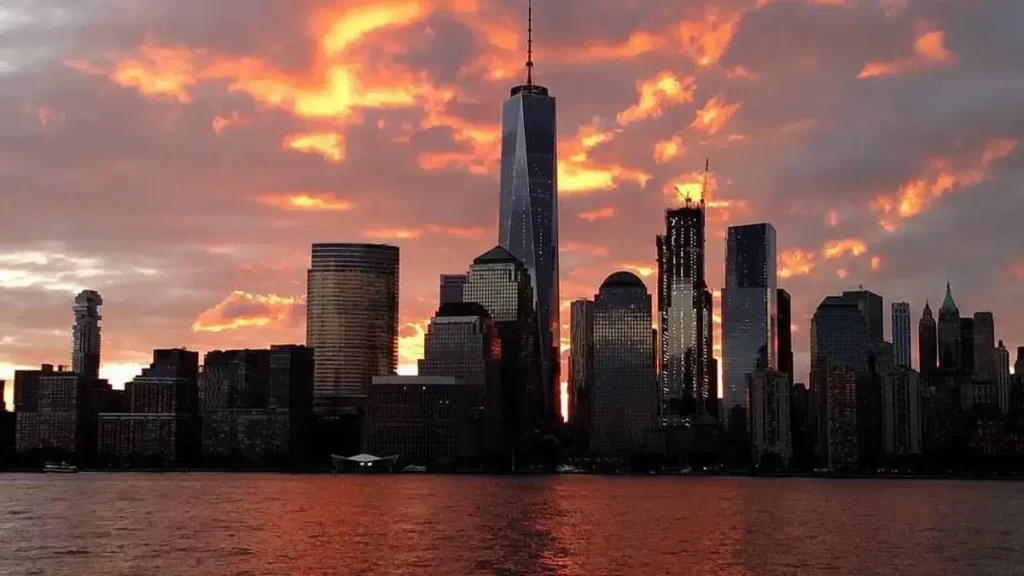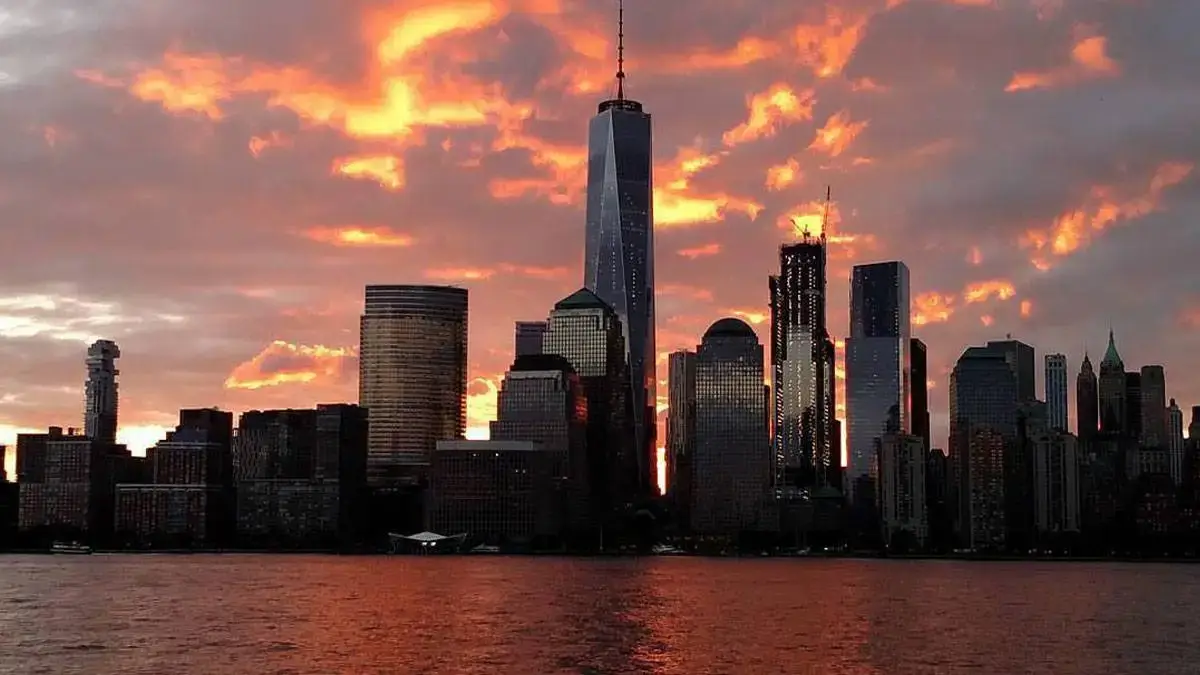Best time to visit One World Observatory
When to visit One World Observatory?

One World Observatory operates year-round from 9 am to 9 pm, with the last elevator ride up at 8.15 pm.
If you’re aiming for the best experience, aim for a sunset visit on a weekday. You’ll catch the golden hour glow and twinkling skyline without the weekend rush.
This guide will help you decide when to visit—morning, afternoon, sunset, or night—and which days and months offer the clearest skies, shortest lines, and most enjoyable views.
Best time of the day to visit One World Observatory
When planning a visit to One World Observatory, the time of day can dramatically change what you see and how much you enjoy your experience.
Here’s a breakdown of each time slot and what kind of views, crowds, and vibes you can expect.
Morning: Clear skies and fewer crowds
Time: 9 am to 11 am
If you’re an early riser or simply want to beat the rush, morning is your golden ticket. The air is generally clearer in the early hours, especially after a cooler night. That means better visibility and crisp views of the city skyline and distant landmarks like the Statue of Liberty, Brooklyn Bridge, and even the curve of the Earth on the horizon.
Advantages:
- Shortest wait times at security and elevator queues
- Great for photographers, the light is softer and more natural
- Less foot traffic, which means a peaceful, reflective experience
- Easier to move around and enjoy exhibits without feeling rushed
Tourist tip: Weekday mornings are particularly ideal if you want that “private” observatory feeling without splurging on VIP tickets.
Afternoon: Brighter views but rising footfall
Time: 12 pm to 4 pm
This is the busiest time at the observatory, especially between 12.30 pm and 3.30 pm. Sunlight is at its brightest, and the reflections on the glass can make photography tricky. However, this time works well for casual visitors and families who aren’t too concerned about crowds.
What to expect:
- Longer queues, especially on weekends or during school vacations
- Bright, panoramic views of the city in full swing
- Warmer interior temperature due to the glass enclosure
Who should go: Tourists who can’t manage mornings or evenings, or those who want to pair the observatory visit with nearby afternoon activities.
Sunset: Golden hour and dramatic cityscape
Time: 6.30 pm to 8 pm (varies by season)
Hands down, this is the most magical time to visit the One World Observatory. Watching the sun dip below the Hudson River and seeing the skyline slowly light up is an unforgettable experience. You’ll need to time your visit precisely. Arrive about 45 minutes before sunset to get a good spot near the west-facing windows. Sunset times
Perks of a sunset visit:
- Golden hour photography with dramatic shadows and rich tones
- You get two views for one visit: day and night
- Perfect for romantic dates, special occasions, or memorable travel moments
Heads up: This time is also the most crowded, so expect more people jostling for the best views. If you’re okay with the bustle, it’s worth every minute.
Night: NYC lights and the city’s pulse
Time: 8 pm to 9 pm
There’s something enchanting about seeing New York City from above when it’s glowing with lights. The bridges twinkle, cars look like moving stars, and skyscrapers pulse with life. While you won’t see distant landmarks clearly at night, the overall vibe is energetic and urban.
Night visit pros:
- No glare or reflections from sunlight
- Great for soaking in NYC’s electric nightlife from a calm, elevated perspective
- Fewer kids and families, more relaxed pace
Tip for night visits: Try weekdays for fewer crowds and a quieter ambiance.
Best day of the week to visit One World Observatory: Weekday vs weekend
Planning your visit around the day of the week can make a huge difference in your experience. Here’s how it mostly plays out:
Weekdays: Smooth sailing and shorter waits
Ideal for: Travelers looking for a stress-free, less-crowded visit.
From Monday to Thursday, foot traffic is noticeably lower, especially in the mornings. You’ll breeze through the ticket check, security lines, and elevator rides without much waiting. You can take your time at the Sky Portal, walk freely at the observatory, and find clear windows for taking pictures.
Why choose weekdays:
- Best for families with kids (avoid stroller congestion)
- Great for elderly visitors who want more space and seatin
- Better suited for those who want to truly absorb the view without distractions
Weekends: High energy but heavy crowds
Ideal for: Those who prefer a livelier, buzz-filled atmosphere.
Fridays through Sundays are naturally packed. Tour groups, locals, and international travelers all flow into the observatory, especially between 12 pm and 6 pm. Expect longer waits, busier restrooms, and more competition for spots near the windows.
How to make it work:
- Book your ticket well in advance
- Aim for 9 am entry or post 8 pm for less congestion
- Avoid sunset unless you’re okay with standing shoulder to shoulder
Best month or season to visit the One World Observatory
New York City transforms with the seasons, and so does your view from the top. Let’s explore what each season has to offer, and when you should plan your visit.
Spring (March to May): Clear skies and pleasant vibes
As the snow melts and the city wakes up, spring becomes a fantastic time to visit. Visibility is excellent, temperatures are comfortable, and trees and parks below start turning green. Tourist crowds haven’t fully peaked yet, especially in early spring.
Best spring tip: Visit midweek in April for the sweet spot between winter haze and summer crowds.
Summer (June to August): Longer days, heavier crowds
If you’re planning a summer trip, know this: it’s peak tourist season. Expect the longest lines, highest ticket demand, and busiest restrooms. That said, summer offers the longest daylight hours, allowing more flexibility in choosing your time slot.
Tips for summer visits:
- Book early morning or late evening
- Bring a refillable water bottle, as the interior can get warm
- Consider visiting in June or late August for fewer crowds
Fall (September to November): Stunning skyline and mild weather
Fall is a dream season – cool air, brilliant sunsets, and the city blanketed in autumn colors. September and October especially offer clear skies and moderate temperatures, which means ideal visibility.
Best reason to go in fall: Sunset views are at their best, with warm orange and pink tones reflecting off NYC’s skyline and rivers.
Winter (December to February): Fewer crowds, but hazy views
Winter is the least crowded time at One World Observatory. Lines are shorter, and it’s easy to find seats and peaceful corners. However, visibility can be hit or miss due to fog, snow, or cloud cover. Days are shorter, too, so you’ll need to plan for earlier entry.When to avoid: Snowy days, unless you love the moody vibe of NYC in fog.

